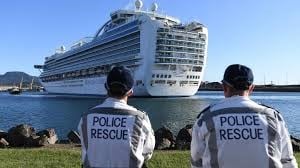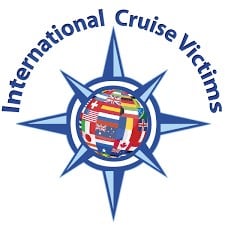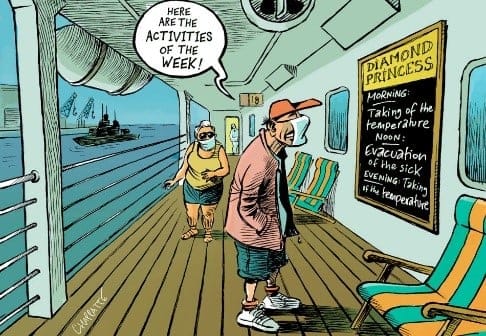Although it is hard for me to believe, each and every year approximately 30 million people spend time and a great deal of money ($150 billion yearly) on cruise ships, although it creates the perfect environment for the spread of infectious diseases.
Empowerment
Cruise ships bring large numbers of people together in crowded, relatively small enclosed spaces enabling disease to spread from one person to another or transmitted by food or water, and, in this “traveling city,” thousands of people share sanitation and HVAC systems. To add to the complexity of the cruise ship environment is the fact that the individuals come from different cultures, experience different immunization backgrounds and arrive with various health conditions. Diseases run from respiratory and GI infections (i.e., norovirus) to vaccine-preventable diseases (think chickenpox and measles).
Passengers and crew interact in the dining halls, recreational rooms, spas, and pools, increasing the opportunity for organisms to be transmitted among them. At the same time, an infecting agent has the potential to enter the food or water supply or the sanitation and HVAC systems that are distributed widely across the ship causing significant morbidity and/or mortality.
When one group of passengers goes ashore there is very little time for the crew to thoroughly clean the ship before the next group arrives; in addition, the same crew remains from group to group so that one infected crew member can shed cells and, in the case of COVID-19, which takes about 5-14 days to manifest, dozens (or hundreds) can become infected from one person.

To add to the problem, passengers and crew get on and off the ship at different ports and may be exposed to illness and disease at one locale, carry it on board, share it with passengers and crew, and then spread it to people living in the next port of call.
Not the First
This is not the first time that ships have become Petri dishes for disease. The word “quarantine” is derived from a combination of illness and ships. When the Black Death paralyzed Europe in the 14th century the Venetian trading colony, Ragusa, did not entirely close, allowing new laws for visiting ships (1377). If the ships arrived from places with the plague, they were required to anchor offshore for a month to prove they were not carriers of the disease. The time offshore was extended to 40 days and identified as quarantino, Italian for “40.”
A Cruise: A Matter of Life and Death
On February 1, 2020, an email from Hong Kong health officials alerted Princess Cruises to the fact that an 80-year-old passenger has tested positive for the new coronavirus after getting off the Diamond Princess in their city. Albert Lam, an epidemiologist for the Hong Kong government recommended a major cleaning of the ship.
Nothing happened until happened until the next day (February 2, 2020) when Dr. Grant Tarling, Group Vice President and Chief Medical Officer for the Carnival Corporation (includes Carnival Cruise Line, Princess Cruises, Holland America Line, Seabourn, P&O Australia and HAP Alaska) noted the issue via social media.
Carnival operates 9 cruise lines with over 102 ships and carries 12 million passengers annually. The corporation represents 50 percent of the global cruise market and, Dr. Tarling, as the company’s doctor is responsible for responding to outbreaks. When Dr. Tarling read the report but he responded with only the lowest level protocols.
The British registered Diamond Princess was the first cruise ship to register a major outbreak on board and was quarantined at Yokohama for approximately one month (as of February 4, 2020). On this ship over 700 contracted the disease and 14 people died. A few months later (May 2, 2020), over 40 cruise ships had confirmed positive cases on board. As of May 15, 2020, Carnival registered the MOST Covid19 cases (2,096) affecting 1,325 passengers and 688 crew members resulting in the death of 65 people. Royal Caribbean Cruises Ltd. reported 614 known cases (248 infected passengers and 351 crew), resulting in 10 deaths. https://www.miamiherald.com/news/business/tourism-cruises/article241914096.html

Time for the Lawyers
As of May 15, 2020, Tom Hals of Reuters reported that, of 45 Covid19 cases in litigation, 28 were against Princess Cruise Lines; 3 were against other cruise lines; 2 meat processing companies; Walmart Inc; 1 senior living facility operator; 2 care centers; 1 hospital and 1 doctor’s group.
According to Spencer Aronfeld, a lawyer with several pending coronavirus cases, “Suing a cruise line for these types of cases is extraordinarily difficult,” because cruise lines enjoy a number of protections: they are not U.S. companies and not subject to health and safety regulations like the Occupational Safety and Health Act (OSHA) or the Americans with Disabilities Act (ADA).
No one is certain on how to proceed. The Republicans are interested in shielding businesses from lawsuits while the Democrats have a bailout focus. A liability shield would protect businesses from lawsuits from employees and customers who might claim that company negligence created the perfect environment for contracting the illness. If companies had a shield it might give them the confidence to reopen (assuming the business was not guilty of gross negligence, recklessness or willful misconduct); however, deleting the threat of liability is likely to discourage consumers from returning to cruise lines, airlines, hotels and destinations or resuming other day-to-day activities. One of the major challenges to consumers and employees is documenting exactly where/how they contacted the virus (i.e., on public transportation to/from work, at a rally or street demonstration).
Finding Fault
Many companies (i.e., Carnival Corporation owns Diamond Princess), register their vessels in countries with lenient labor laws. Unfortunately the people from these countries are desperately in need of employment and the fact that the accommodations for cruise ship crews are considered less than desirable, the pay scale is low and there is little job security – these conditions precedent are not a barrier to their quest for a job, as some employment and a pay check is better than the alternative.
It is important to note that there is a difference between crew and staff. Crew members include waiters, and cleaners with sleeping accommodations on “B-deck” (located below the water line) and offers a bunk-style configuration containing between 1-4 bunk beds, a chair, a small space for clothes and perhaps a TV and telephone. The next rung on the hierarchy ladder are the Staffers who are likely to include entertainers, managers, shop workers and officers and they are assigned single rooms on “A-deck,” located above the water line.

Workers on a cruise ship work 7 days a week based on a contract that runs for a defined number of months. A supervisory kitchen employee may earn $1949 per month and work 13 hours per day, 7 days a week for 6 months (2017). Instead of a full day off, employees work on a rotating shift, so they get some time each day.
Diseases Find Their Happy Place
The close living/dining quarters of the crew, combined with an intense work schedule, creates a perfect environment for the spread of disease. To the large numbers of people living and working in small spaces add the high proportions of older passengers who tend to be more vulnerable to disease plus the physical and psychological stress that may make their existing ailments worse and the perfect environment for the spread of disease has been created.
A Center for Disease Control (CDC) report found that the group of crew members on the Diamond Princess most impacted were the ship’s food service workers. These employees were in close contact with passengers, and the utensils and plates they used. Of the 1068 crew members on board, a total of 20 crew members tested positive for Covid19 and of this group, 15 were food service workers. In total, approximately 6 percent of the ship’s 245 food service workers became ill.
Gerardo Chowell, a mathematical epidemiologist from Georgia State University (Atlanta, Georgia) and Kenji Mizumoto, an epidemiologist from Kyoto University (Japan) found that the day the quarantine was introduced on the Diamond Princess cruise ship, one person infected more than 7 others and the spread was facilitated by close quarters and touching surfaces contaminated with the virus); however, as soon as passengers were quarantined the infection spread decreased to one person.

My Mind is Made Up
Even with the data, the warnings and the deaths, there are many consumers who will not be turned away from a holiday cruise. The Hurtigruten’s MS Finnmarken recently welcomed 200 passengers to a 12-day voyage along the Norwegian coast. These passengers were part of the first ocean cruise to take place since the coronavirus pandemic startled the industry and brought cruising to a halt. Perhaps geography has something to do with the decision to sail; most of the passengers were from Norway and Denmark where the infection rate remains relatively low and restrictions have been paused. The Norwegian cruise line, operated by the luxury SeaDream line, left Oslo on June 20, 2020 and the demand for reservations has been so large that the company is adding a second trip in the same region.

Paul Gauguin Cruises (operator of the Paul Gauguin in the South Pacific) is scheduled to resume small-ship experiences in July 2020, implementing a COVID-Safe Protocol. The company claims that because of the small size of the ships, medical infrastructure, protocols and its onboard team, they have created a safe environment for passengers. The systems and procedures have been designed in cooperation with the Institut Hospitalo-Universitaire (IHU) Mediterranee Infection of Marseilles, a leading center in the field of infectious diseases and the Battalion of Marine Firemen of Marseilles
The protocols include:
- Monitoring of people and goods prior to boarding.
- Following cleaning procedures advised by the US Centers for Disease Control and Prevention (CDC) and the World Health Organization (WHO).
- Directions for social distancing.
- Before boarding, guests and crew must present a signed doctor’s medical form with a completed health questionnaire, undergo a health check and screening by the ship’s medical staff.
- Luggage disinfected using a sanitizing mist or UV lamps.
- Surgical and cloth masks, disinfecting wipes and hand sanitizer bottles presented to guests.
- 100 percent fresh air in staterooms through non-recirculating a/c systems and ventilated air renewed in the common areas at least 5 times per hour.
- Redesigned restaurants offering contact-less a la carte dining options.
- Public spaces capped at 50 percent occupancy.
- High-touch points (i.e., door handles and handrails) disinfected hourly with EcoLab peroxide, eliminating germs, bacteria and protecting against biological contamination.
- Crew members wear masks or a protective visor when in contact with guests.
- Guests asked to wear masks in hallway corridors and recommended in public spaces.
- Hospital equipment onboard includes mobile laboratory terminals that allow testing on-site for infectious or tropical diseases.
- Advanced diagnostic equipment (ultrasound, radiology, and blood biological analysis) available.
- Doctor and nurse onboard for every sailing.
- Zodiacs disinfected after each stopover.
- Re-boarding after shore excursions permitted only after passengers have passed a temperature check and follow disinfection procedures.
Cruise operators in other countries (i.e., France, Portugal, USA) are still trying to determine a start date. It is likely that when the companies reboot, they will focus on shorter river voyages and avoid crossing international borders where there are complex and frequently confusing regulations. Travel restrictions between countries means that most cruise passengers are likely to be domestic tourists.
Going Forward. What All Cruise Lines Must Do
The International Cruise Victims Association recommends:

- Hire an epidemiologist for each cruise ship in the fleet to scientifically determine the type and origin of the infectious disease. The expert should be required to submit a report to the CDC and made available to the public on the CDC website.
- Congress should require cruise lines to:
- Postpone the next cruise following an outbreak of any type of disease without reasonable time between cruises for sanitizing and disinfecting.
- Pay ill crew members when they become sick.
- Permit passengers to cancel/reschedule a cruise without penalty when they are reasonably concerned about their personal health.
- Be transparent and disclose, in a timely manner, when a ship has experienced a disease, prior to the boarding of passengers.
- Establish clear protocols regarding passengers and crew members whenever there are diseases that require quarantine.
- Adopt clear and uniform protocols protecting crew members from communicable diseases and provide personal protection equipment (PPE) including masks, glasses and gloves.
Should You Stay or Should You Go

If you do decide to take a cruise, finding that the reward is greater than the risk, there are a few steps passengers can take in order to exercise some control over their health:
- Before making a cruise ship reservation visit the website www.cdc.gov/nceh/vsp/default.htm and check the ship’s inspection score. A score of 85 or lower is unacceptable.
- Update immunization status, including influenza, diphtheria, pertussis, tetanus vaccinations, and varicella (if never had the disease).
- Get vaccinations against food borne diseases such as typhoid and hepatitis.
- All children accompanying adults should have measles vaccine.
- Bring your own disinfectant (i.e., handi-wipes, disinfectant spray, hand sanitizer) and wipe everything (luggage, doorknobs, furniture, fixtures, faucets, closet hangers…everything).
- Avoid touching banisters and handrails. Use disposal gloves or a tissue to separate your fingers from all materials.
- Do not shake hands with anyone.
- Drink plenty of water – stay hydrated.
- When you hear the term “Code Red” the ship will be in lockdown (may be as a result of a norovirus detection or other infectious disease). At this time public doors will remain open; all meals will be served (no buffet or shared utensils); look for staff doing intense cleaning and disinfecting in public areas and corridors.
- Cruise ship managers should counsel passengers about risk factors and symptoms of gastrointestinal illnesses and respiratory infections and that symptoms should be reported to the ship’s infirmary as soon as they become sick.
- Management should inform passengers about the importance of quarantine if they get sick (remaining in their cabins to prevent spreading the illness to other passengers).
Where to Turn
Cruise lines operate in a complex environment. There are no government or international regulatory agencies tracking incidents of COVID-19 with links to cruise ships (with information available to the public). Accurate data should be available and shared with the consumers, regulators, scientists/researchers and health care professionals so that there can be a valid assessment of the risks associated with cruising. According to Dr. Roderick King, CEO of the Florida Institute for Health Innovation, “When it comes to a pandemic, it’s all about the counting.”
The US Department of Transportation may be of some assistance. The Federal Maritime Commission (FMC) requires operators of passenger vessels carrying 50+ passengers from a US port to be financially capable of reimbursing their guests if a cruise is cancelled. FMC also requires proof of the ability to pay claims arising out of passenger injuries or death for which the ship operator may be liable. If a cruise is cancelled or there is an injury during the cruise, the consumer must initiate action (fmc.gov).
The US Coast Guard is responsible for cruise ship safety and a ship sailing in US waters must meet US standards for structural fire protection, firefighting and lifesaving equipment, watercraft integrity, vessel control, navigation safety, crewing and crew competency, safety management and environmental protection.
The Cruise Vessel Security and Safety Act (2010), prescribes security and safety requirements for most cruise ships that embark and disembark in the USA. The Act mandates that reports of criminal activity be reported to the FBI.
Cruise ships are required (46 USC 3507/c/1) to have a security guide available for passengers. This guide provides information that includes description of medical and security personnel designated on board to prevent and respond to criminal and medical situations and law enforcement processes available in regard to criminal activity.
A Plan or a Promise
The Cruise Line International Association (CLIA), an industry supported trade organization, claims that the industry is following a CDC mandated suspension of cruising in order to develop protocols that will provide stringent boarding standards and passenger screening, social distancing on-board, and new food service options. There is likely to be additional onboard medical teams and hospital-level sanitation.

If and when you decide to make a cruise line reservation, the next call should be to an insurer to determine the best policy that will cover anything and everything from a broken leg to COVID-19. Some industry professionals recommend a “Cancel for Any Reason” policy. This is an optional upgrade can may reimburse travelers 75 percent of their trip cost and is the only option that allows travelers to cancel their trip for any reason not covered by a standard policy, including travel bans or fear of traveling due to coronavirus.
© Dr. Elinor Garely. This copyright article, including photos, may not be reproduced without written permission from the author.
#rebuildingtravel
WHAT TO TAKE AWAY FROM THIS ARTICLE:
- To add to the problem, passengers and crew get on and off the ship at different ports and may be exposed to illness and disease at one locale, carry it on board, share it with passengers and crew, and then spread it to people living in the next port of call.
- At the same time, an infecting agent has the potential to enter the food or water supply or the sanitation and HVAC systems that are distributed widely across the ship causing significant morbidity and/or mortality.
- Although it is hard for me to believe, each and every year approximately 30 million people spend time and a great deal of money ($150 billion yearly) on cruise ships, although it creates the perfect environment for the spread of infectious diseases.






















